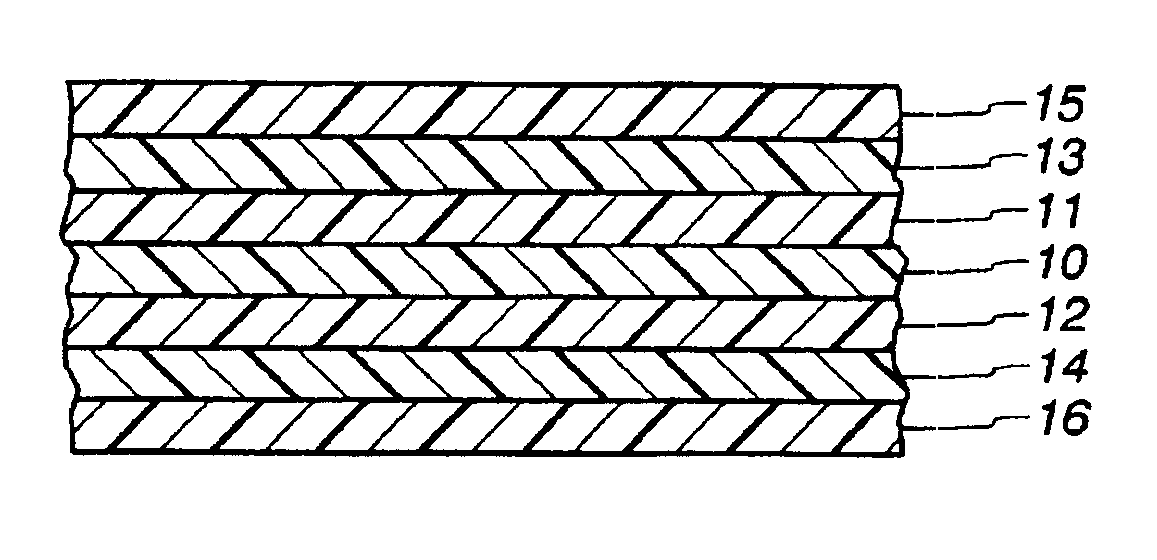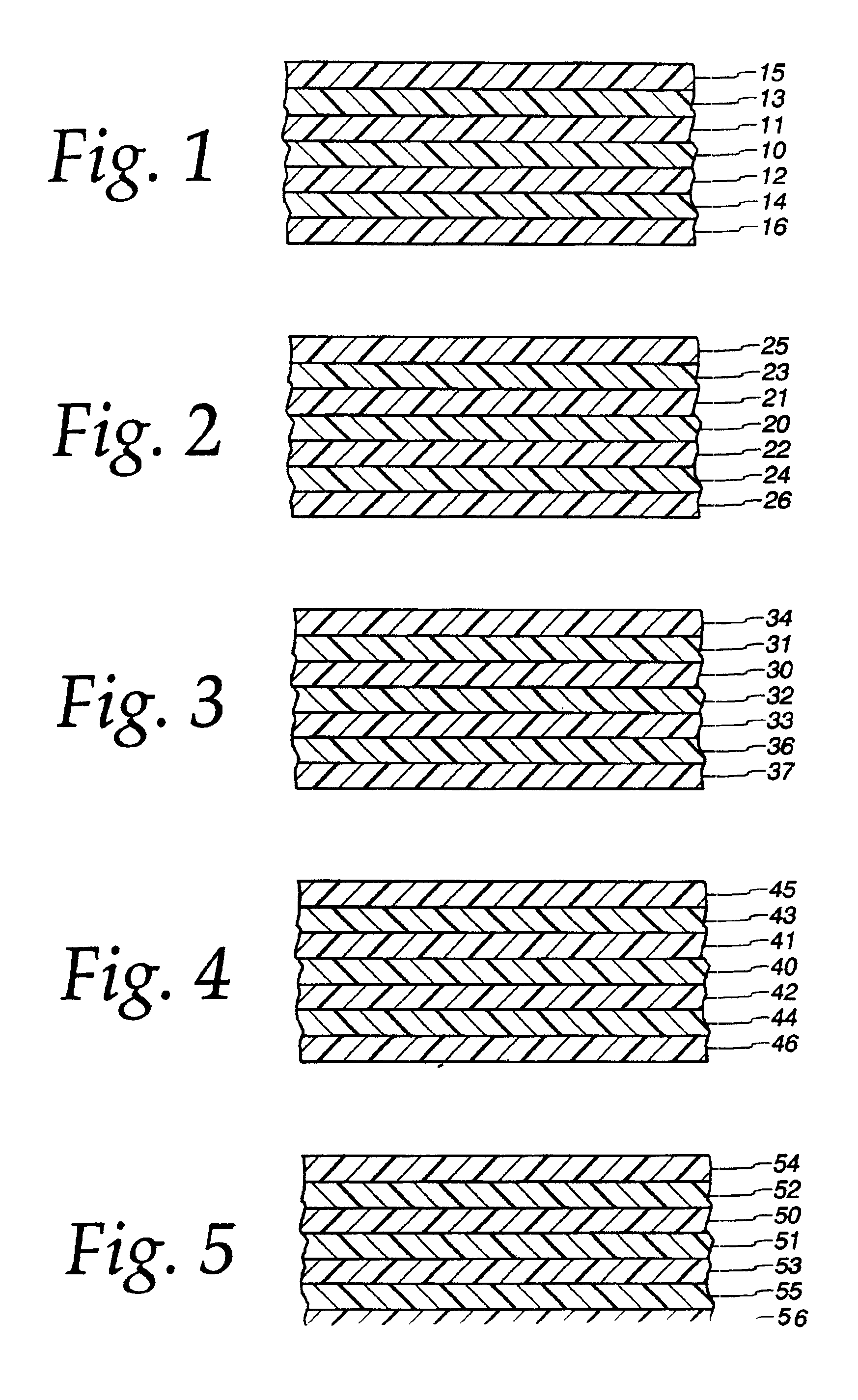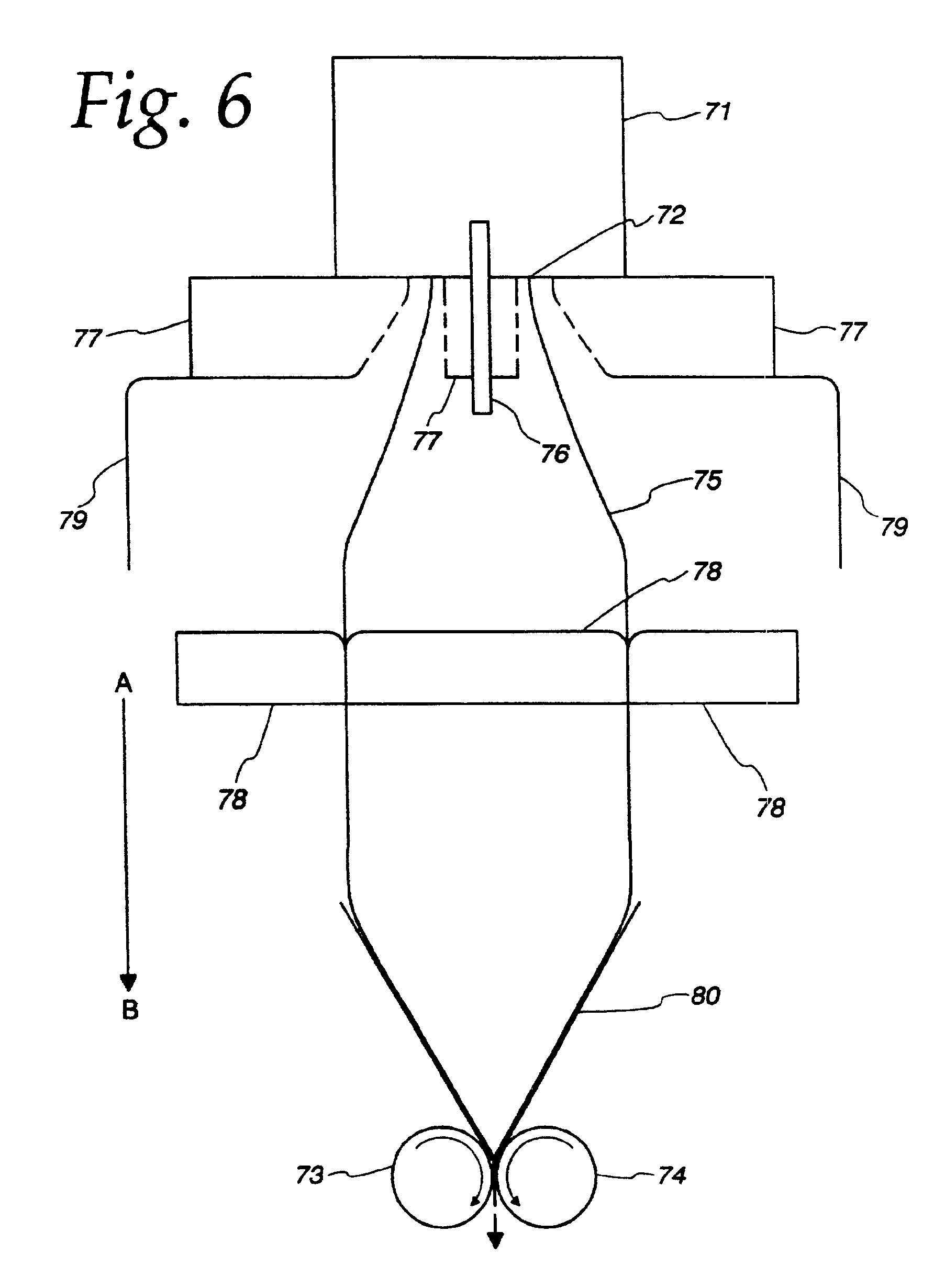Thermoformable multilayer polymeric film
a polymeric film and multi-layer technology, applied in the field of thermoplastic polymeric films, can solve the problems of poor impact resistance, poor flex crack resistance, poor impact resistance, etc., and achieve the effects of improving the physical properties of “snap back”, tight packaging, and improving the gloss
- Summary
- Abstract
- Description
- Claims
- Application Information
AI Technical Summary
Benefits of technology
Problems solved by technology
Method used
Image
Examples
first embodiment
[0060]In its first embodiment, the film of the invention is a seven-layer structure. The film may have any thickness, and preferably has a thickness of from 2 to 10 mils, most preferably from 2.5 to 7.5 mils.
[0061]The core or central layer 10 is an oxygen barrier layer which contains ethylene vinyl alcohol (“EVOH”) or EVOH copolymer, which is sometimes referred to as saponified ethylene vinyl acetate copolymer. Core layer 10 may have a thickness of between 5 to 20% of the film, preferably about 10%.
[0062]EVOH copolymer is well known in the art of making polymeric film for its favorable properties as an oxygen barrier and gas barrier material. The EVOH used in the layer 10 may comprise up to 44 mole percent ethylene, preferably up to 38 mole percent ethylene. Generally, as the percent ethylene content increases, the gas barrier properties of the EVOH copolymer decrease and its moisture barrier properties increase. However, at higher levels of humidity such as at levels of from 90 to ...
second embodiment
[0086]FIG. 2 depicts the films of the invention. In this embodiment, the film does not contain a core layer of EVOH.
[0087]In its second embodiment, the film may have any thickness, and is preferably of a thickness of from 2 to 10 mils, most preferably from 2.5 to 7.5 mils.
[0088]As in the first embodiment, the film has layers 21 and 22 of a nylon, preferably an amorphous nylon copolymer that is blended with a nucleated nylon homopolymer, and more preferably from 5 to 35 percent of an amorphous nylon copolymer. Like layers 11 and 12 in the first embodiment, the amorphous nylon copolymers of layers 21 and 22 are blended with various other nylons. In a preferred embodiment, the amorphous nylon copolymer of layers 21 and 22 is blended with a nucleated nylon homopolymer.
[0089]Disposed between layers 21 and 22 is layer 20 of a polymeric adhesive. Additionally, disposed in contact with layers 21 and 22 are layers 23 and 24 of a polymeric adhesive. Layers 20, 23 and 24 may be any of various ...
third embodiment
[0093]In a third embodiment, the film may have any thickness, and is preferably from 2 to 10 mils, most preferably from 2.5 to 7.5 mils.
[0094]In its third embodiment, the film has an oxygen barrier core layer 30 of an EVOH copolymer. The EVOH layer used in layer 30 may comprise up to 44 mole percent ethylene, preferably up to 38 mole percent ethylene.
[0095]Disposed in contact with either surface of layer 30, thereby forming a sandwich with the EVOH layer in the middle, are layers 31 and 32 of a nylon. Like layers 11 and 12 that form a sandwich about a core EVOH layer in the first embodiment, the nylon of layers 31 and 32 may comprise any of the various nylons commonly used in the art of making polymeric films. In a preferred embodiment, the nylon of layers 31 and 32 is an amorphous nylon copolymer, more preferably from 5 to 35 percent of an amorphous nylon copolymer. The amorphous nylon copolymer is blended with various other nylons such as nylon 6, nylon 6,6, nylon 6,12, nylon 12, ...
PUM
| Property | Measurement | Unit |
|---|---|---|
| Heat | aaaaa | aaaaa |
| Physical properties | aaaaa | aaaaa |
Abstract
Description
Claims
Application Information
 Login to View More
Login to View More - R&D
- Intellectual Property
- Life Sciences
- Materials
- Tech Scout
- Unparalleled Data Quality
- Higher Quality Content
- 60% Fewer Hallucinations
Browse by: Latest US Patents, China's latest patents, Technical Efficacy Thesaurus, Application Domain, Technology Topic, Popular Technical Reports.
© 2025 PatSnap. All rights reserved.Legal|Privacy policy|Modern Slavery Act Transparency Statement|Sitemap|About US| Contact US: help@patsnap.com



